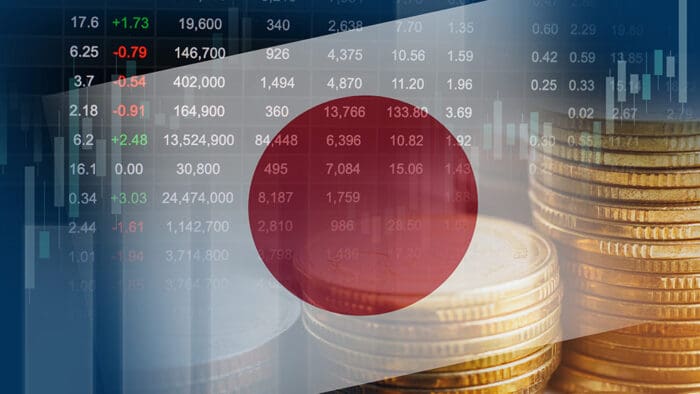The article “The Vanishing Illiquidity Premium” first appeared on Alpha Architect Blog.
Liquidity—the ability to buy and sell significant quantities of a given asset quickly, at low cost, and without a major price concession—is valuable to investors. Therefore, they demand a premium as compensation for the greater risks and costs of investing in less-liquid securities. For example, liquidity risk partly explains the equity risk premium—the average transaction costs on stock trades are larger than they are on Treasury bills, which can be traded in large blocks of tens of millions of dollars in a single transaction without affecting their price.
Academic research, including the 2015 study “The Pricing of Illiquidity as a Characteristic and as Risk,” published in the September 2015 issue of the Multinational Finance Journal, has found that the illiquidity premium in stocks is positive and highly significant worldwide after controlling for global and regional common risk factors (such as beta, size, and value). The research has also found that the market requires a higher premium for liquidity sacrifice in negative environments (for example, illiquidity increased during the great financial crisis), when investors holding illiquid equities become liquidity takers (divesting them, either to meet liquidity needs or due to panicked selling) and pay a steep price in doing so. In other words, the liquidity premium is conditional on the state of the market—it’s much smaller in good times and much larger in bad times.
The finding of a liquidity premium is consistent with economic theory, which holds that assets that perform poorly in bad times (when the marginal utility of consumption is higher) should carry large premiums. And what’s more, illiquid stocks (which tend to be smaller stocks) have greater sensitivity to liquidity shocks and thus also should carry premiums (helping to explain the size premium). Stocks whose systematic liquidity risk rises more when funding illiquidity is worse have higher expected returns. The finding of a liquidity premium also holds for corporate bonds. Corporate bond illiquidity increases monotonically when moving from safer bonds to riskier bonds, helping to explain their incremental yield.
To summarize the theory and literature on equities and liquidity, investors care about stock illiquidity and thus demand higher expected returns on stocks that are more illiquid. Variations in illiquidity affect stock valuations. Thus, investors not only prefer assets that are more liquid, but they also prefer assets that have smaller exposure to liquidity shocks. In other words, they prefer assets whose prices fall less when market illiquidity rises, assets whose illiquidity rises less when market illiquidity rises, and assets whose illiquidity rises less when there is a market-wide decline in prices.
Diminishing Illiquidity
Of particular interest is that over the past 40 years we’ve seen many technological (such as high-frequency trading) and regulatory changes (such as decimalization) that may have contributed to improving liquidity by lowering bid-offer spreads in financial markets. There may also have been impacts on liquidity caused by the dramatic expansion of the hedge fund industry, which now has more than $3 trillion in assets under management. It’s possible that hedge funds, many of which are long-horizon traders and thus incur relatively small transaction costs, might have arbitraged away (or at least reduced the size of) the liquidity premium by buying illiquid stocks and short selling liquid stocks.
Financial innovation, in the form of low-cost index funds and ETFs, may also play a role in the shrinking of the liquidity premium. Their presence allows investors to buy and sell illiquid assets indirectly lowering the sensitivity of returns to liquidity. These instruments enable investors to hold illiquid stocks indirectly while incurring low transaction costs, thereby reducing the sensitivity of returns to liquidity. For a more thorough understanding of this mechanism read my or Wes’ prior post on ETF Liquidity.
A diminishing illiquidity premium was found by Azi Ben-Rephael, Ohad Kadan, and Avi Wohl, the authors of the 2015 study “The Diminishing Liquidity Premium,” published in the April 2015 issue of the Journal of Financial and Quantitative Analysis. They found that the characteristic liquidity premium had significantly declined over the past four decades. It was large and robust until the mid-1980s but had become small and “second-order” since. In fact, they found that there was no longer a liquidity premium among NYSE and AMEX stocks. They also found that even for smaller stocks there was a characteristic liquidity premium in early periods, but it declined significantly and largely disappeared later, concentrated only among small stocks. Thus, to the extent that a characteristic liquidity premium currently exists in U.S. public equity, it’s economically small. They also found that the decline in the liquidity premium stems from an improvement in liquidity. This finding is consistent with markets having become more efficient following more intense arbitrage activity.
The authors noted that their results have important implications for equity valuations: “A reduction of the average annual liquidity premium from 1.8 percent to 0 percent implies a very large price effect.” All else equal, a smaller liquidity premium justifies a lower equity risk premium, providing support for higher valuations. They noted: “A 1 percent decrease in the discount rate may translate into a 10 percent-20 percent increase in valuation.” The decline in the liquidity premium may also help explain the shrinking of the small-cap premium, about which much has been written.
In terms of asset management strategies, their findings cast doubt on the liquidity-based long-short trading strategies that have become common for hedge funds. The authors did emphasize that their results were based on data from only U.S. stock markets. Our equity markets are probably the most liquid markets in the world, and it’s likely that liquidity pricing is more significant in less liquid markets.
The above findings are consistent with those of the authors of the paper “The Pricing of Illiquidity as a Characteristic and as Risk,” published in the September 2015 issue of the Multinational Finance Journal, who found that there was a strong and persistent downward trend in illiquidity since the early 1970s. However, the trend had been interrupted from time to time by bear markets, during which illiquidity rises. For example, they found that while the rise in illiquidity during the 2008-2009 financial crisis was quite strong, by the close of 2014, illiquidity was lower than ever before.
This is an important finding because the sharp decline in illiquidity over the recent decades provides at least a partial explanation for the rise in equity valuations. As trading costs fall, the level of the equity risk premium should be expected to fall as well, resulting in (or justifying) rising valuations. The narrowing of bid-offer spreads and the dramatic fall in commission costs have helped improve liquidity, resulting in a smaller equity risk premium.
Visit Alpha Architect to read more on the Latest Research by Nusret Cakici and Adam Zaremba: https://alphaarchitect.com/2021/11/11/the-vanishing-illiquidity-premium/
Disclosure: Alpha Architect
The views and opinions expressed herein are those of the author and do not necessarily reflect the views of Alpha Architect, its affiliates or its employees. Our full disclosures are available here. Definitions of common statistics used in our analysis are available here (towards the bottom).
This site provides NO information on our value ETFs or our momentum ETFs. Please refer to this site.
Disclosure: Interactive Brokers Third Party
Information posted on IBKR Campus that is provided by third-parties does NOT constitute a recommendation that you should contract for the services of that third party. Third-party participants who contribute to IBKR Campus are independent of Interactive Brokers and Interactive Brokers does not make any representations or warranties concerning the services offered, their past or future performance, or the accuracy of the information provided by the third party. Past performance is no guarantee of future results.
This material is from Alpha Architect and is being posted with its permission. The views expressed in this material are solely those of the author and/or Alpha Architect and Interactive Brokers is not endorsing or recommending any investment or trading discussed in the material. This material is not and should not be construed as an offer to buy or sell any security. It should not be construed as research or investment advice or a recommendation to buy, sell or hold any security or commodity. This material does not and is not intended to take into account the particular financial conditions, investment objectives or requirements of individual customers. Before acting on this material, you should consider whether it is suitable for your particular circumstances and, as necessary, seek professional advice.
Disclosure: Hedge Funds
Hedge Funds are highly speculative, and investors may lose their entire investment.
Disclosure: Margin Trading
Trading on margin is only for experienced investors with high risk tolerance. You may lose more than your initial investment. For additional information regarding margin loan rates, see ibkr.com/interest














Join The Conversation
For specific platform feedback and suggestions, please submit it directly to our team using these instructions.
If you have an account-specific question or concern, please reach out to Client Services.
We encourage you to look through our FAQs before posting. Your question may already be covered!